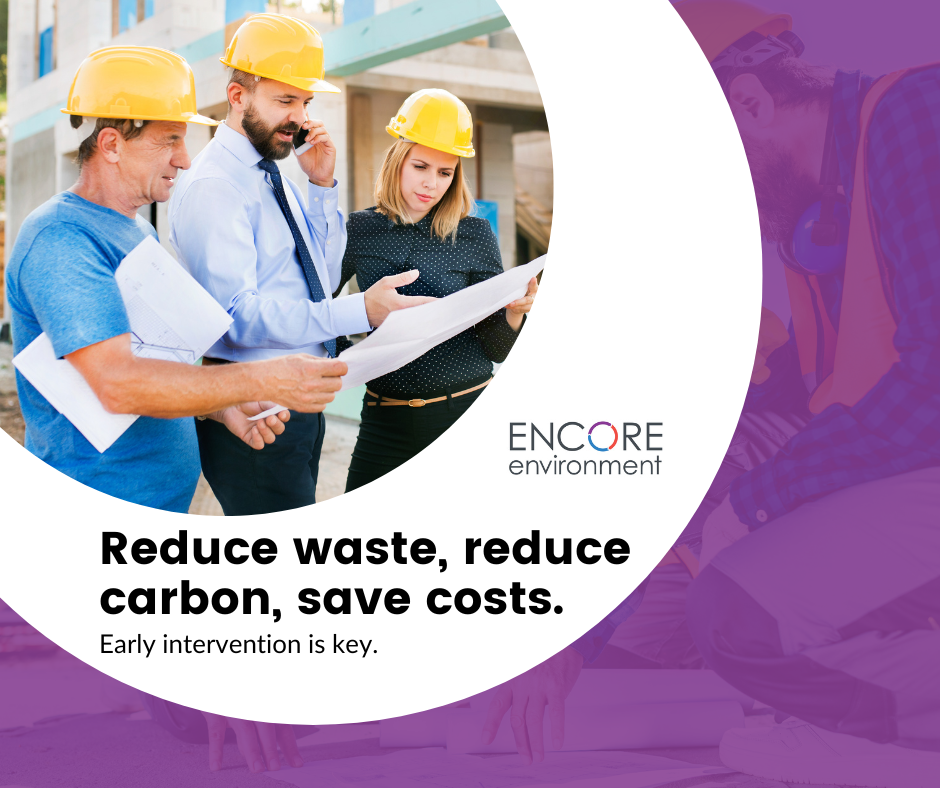For over a decade we have been working with the construction industry to challenge the conventional routes of waste disposal and help them think differently about waste. As a result, we have introduced a number of environmental and social value interventions that have proven to reduce waste, waste costs and save carbon for our clients and create social value by helping local communities in need.
From a waste management perspective early intervention is key.
There is an ever-growing need for companies to reduce waste, reduce waste costs, reduce carbon and demonstrate their social and environmental impact as part of Environmental, Social and Governance (ESG) targets. When it comes to construction waste there are no set goals to effect positive behavioural change, to encourage responsibility or to capture data to gain insight and therefore develop areas of improvement. This is where we disrupt the status quo and provide data driven alternatives.
Architects and design teams play a huge role in assisting construction contractors address the carbon potential at the design stage. If projected carbon data around waste away services is calculated in the ‘project planning and design’ phase (ideally RIBA Stage 2) of a building refit or refurbishment project, a pre-construction and environmental audit (PCEA) can be implemented to influence the decisions being made by the designers and environmental teams, with actual carbon data to reference. Within that calculation, we must also include the embodied carbon. If materials can be reused, less will be manufactured and this is a huge carbon saving when you see it on paper. With this intelligence, the waste management plan can identify opportunities for:
- Facilitating the reuse of existing materials including furniture, floor finishes, ceiling tiles, and window coverings to local organisations such as schools, libraries, charities, and refuges.
- Segregating clean excess construction material such as plasterboard, ceiling tiles, and floor coverings that can be bought locally by others or transferred to other live construction sites.
- Ensuring items that can be recycled and reprocessed such as glass, metal, and timber are segmented, and the end destination is transparent
- Lowering waste costs – less waste means less skips
- Reducing emissions from transporting waste
- All documented with Duty of Care, end destination transparency and a carbon measure
- Create social value from diverting reusable waste items from site to organisations in need.
Putting these processes in place means there is actually minimal waste going into skips, to Materials Recycling Facilities (MRF’s) or EfW (Energy from Waste) Plants.
Construction companies are responsible for the environmental impact of their site, therefore in order to meet standards, gain certification or meet council regulations, they must demonstrate they are making improvements to become more sustainable. However, it is not acceptable for companies to accept on behalf of their clients a blanket 98% recycling rate from the waste supply chain. This is not ‘their waste’ but that of all waste received to one destination. Construction companies can demonstrate, if planned and forecasted correctly, 100% end destination, 100% re-use, and a 100% recycle rate depending on the where the waste/ resource has been sent to.
If a construction company’s waste target for zero carbon is ‘zero waste to landfill’, then it’s already not good enough.
We have found that while targets are in place within environmental audits to lower the carbon impact of waste materials, few have the data measurements and importantly the carbon track and trace methods which can help reduce carbon through the project life cycle. If you don’t know what your carbon footprint is in the first place, how can you implement dynamic plans to reduce it? This means there must be a huge push towards calculating carbon savings and implementing carbon saving initiatives in the early stages of a project to have any chance of meeting the zero carbon targets set and reducing their impact on the environment.


